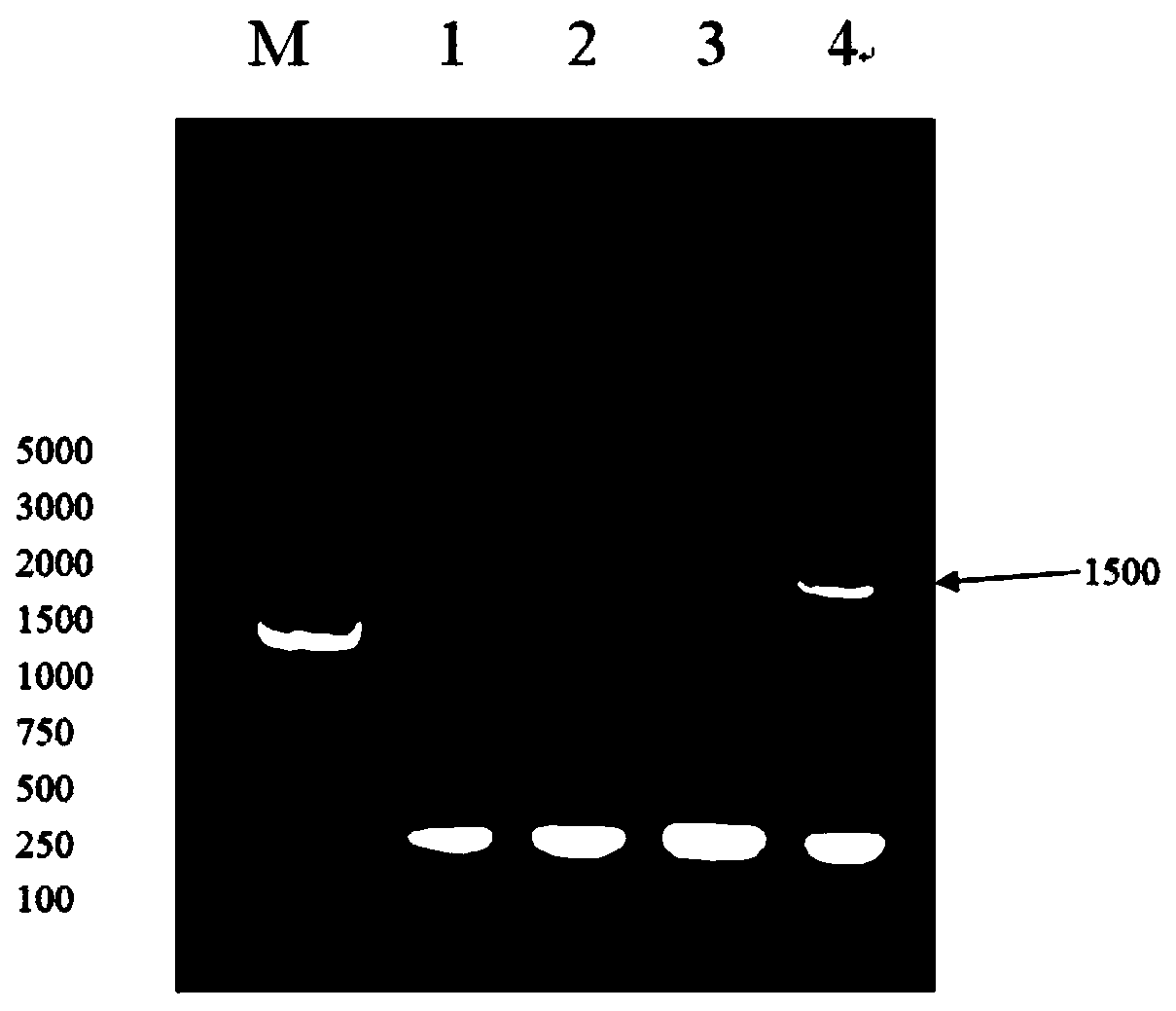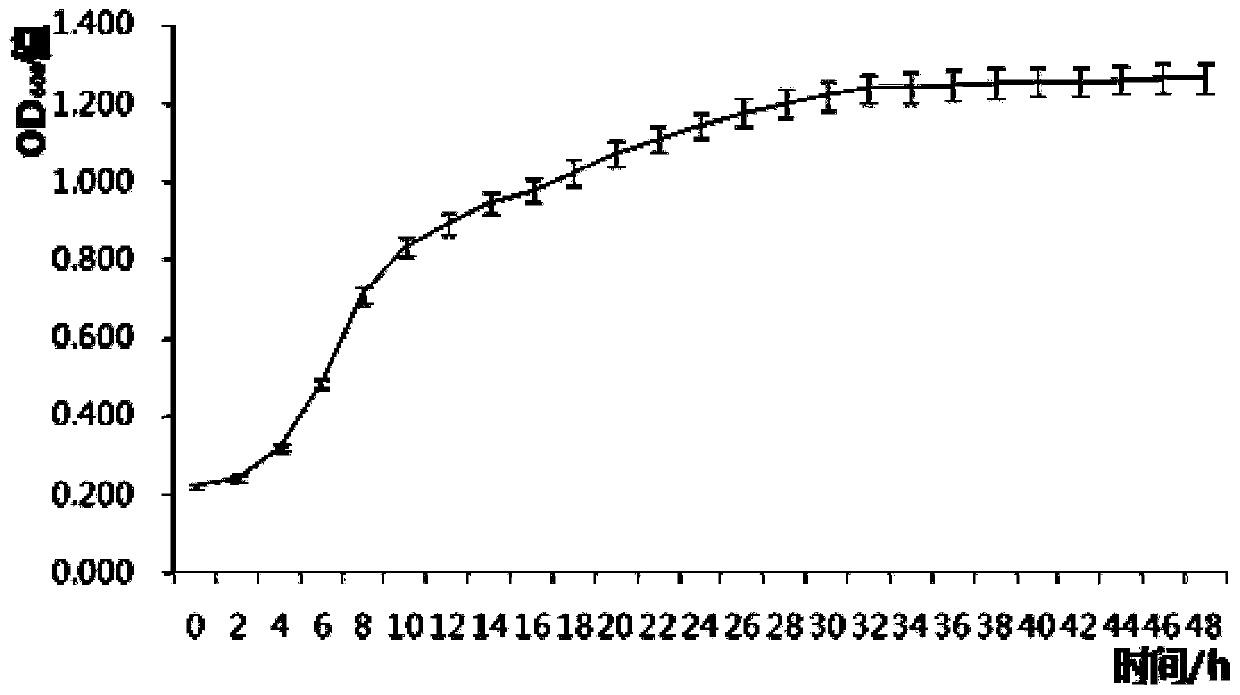Bacillus aryabhattai for promoting corn root development and application thereof
A technology of Bacillus arborii and corn, applied in the field of rhizosphere growth-promoting bacteria, can solve the problems of single effect, lack of strain resources, unsuitable application, etc., to promote seedling growth and root development, improve the environment, and strengthen stress resistance sexual effect
- Summary
- Abstract
- Description
- Claims
- Application Information
AI Technical Summary
Problems solved by technology
Method used
Image
Examples
Embodiment 1
[0021] Example 1 Isolation and preliminary identification of nitrogen-fixing bacillus arborii
[0022] Soil was collected at the brown soil long-term positioning test station, and 10 g of the collected fresh soil sample was weighed, put into a shaking flask filled with 90 mL of sterile water and a small amount of small glass beads, and placed on a shaker for 30 min at 180 r / min. , so that the soil sample is evenly dispersed in the diluent to make 10 -1 Diluent. Draw 1mL 10 -1 Dilute the solution in a glass test tube filled with 9mL sterile water, shake and mix to make 10 -2 Diluent. And so on, serial dilution, until diluted to 10 -6 . This study selected 10 -3 、10 -4 、10 -5 For the three dilution gradient soil dilutions, draw 0.1mL of the dilutions and spread them evenly on the Ashby medium for separation until the surface of the solid medium dries up, and each dilution is repeated 3 times. Place the plate in a constant temperature incubator at 30°C for 5-7 days. Aft...
Embodiment 2
[0023] Molecular identification of embodiment 2 Bacillus arzii
[0024] 1. Extraction of Total DNA
[0025] Pick a single colony in Example 1 and insert it into the liquid beef extract medium, culture it at 37° C. and 180 rpm for 24 hours, take the cultured bacteria liquid and use the Ezup column bacterial genomic DNA extraction kit for DNA extraction.
[0026] 2. PCR amplification of 16S rDNA
[0027] 16S rDNA amplification primers 27F (SEQ ID NO: 1) and 1492R (SEQ ID NO: 2) were used as upstream and downstream primers, and the total DNA of LAD bacteria was used as a template for PCR amplification. The reaction system was: 1.5 μL total DNA of LAD bacteria; 12.5 μL 2×Taq MasterMix; 0.5 μL each of upstream and downstream primers (10 μmol / L); 10 μL sterile water. The reaction conditions were: pre-denaturation at 94°C for 5 min; denaturation at 94°C for 1 min, annealing at 60°C for 1 min, extension at 72°C for 90 s, a total of 35 cycles; extension at 72°C for 10 min. The produ...
Embodiment 3
[0034] Example 3 Determination of biological properties of Bacillus aryabhattai LAD
[0035] 1. Activation of LAD strain
[0036] The preserved LAD strain was picked and cultured in beef extract-peptone liquid medium at 37°C and 180 r / min for 24 hours to make the LAD strain active.
[0037] 2. Growth curve determination
[0038] The activated bacterial solution was inserted into 50ml of beef extract peptone medium according to the inoculum amount of 2wt%, and cultured at 180r / min at 37°C. Measure the OD of the bacterial solution every 2 hours 600 Value until the OD value tends to be stable, do three parallel groups, and draw the growth curve with the blank medium as the control. As shown in the figure, the LAD strain is in the lag phase within 0-4 hours of inoculation, and enters the logarithmic phase after 4 hours. At this stage, the strain grows faster, starts to grow slowly at 12 hours, and tends to be stable at 32 hours.
PUM
 Login to View More
Login to View More Abstract
Description
Claims
Application Information
 Login to View More
Login to View More - R&D
- Intellectual Property
- Life Sciences
- Materials
- Tech Scout
- Unparalleled Data Quality
- Higher Quality Content
- 60% Fewer Hallucinations
Browse by: Latest US Patents, China's latest patents, Technical Efficacy Thesaurus, Application Domain, Technology Topic, Popular Technical Reports.
© 2025 PatSnap. All rights reserved.Legal|Privacy policy|Modern Slavery Act Transparency Statement|Sitemap|About US| Contact US: help@patsnap.com



